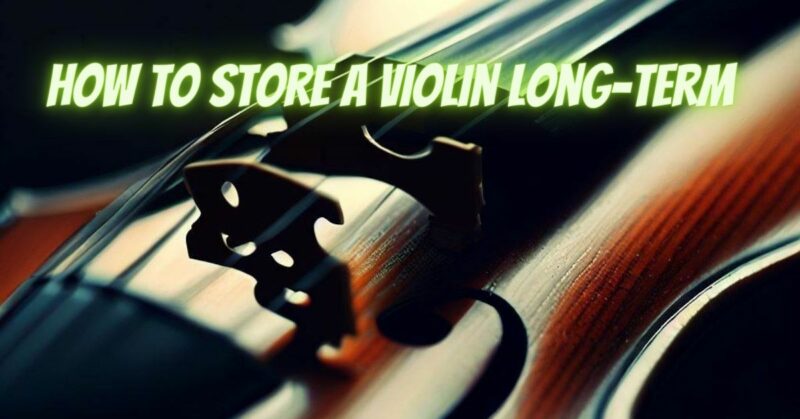Storing a violin properly is crucial for maintaining its condition and preserving its sound quality over the long term. Whether you’re a professional musician or an avid violin enthusiast, taking the necessary steps to store your instrument correctly will help protect it from damage. In this article, we will discuss essential guidelines for storing a violin long-term.
- Choose an Appropriate Case: Select a high-quality, well-padded violin case that provides proper protection. The case should be sturdy, water-resistant, and have a secure latching mechanism. It should also have a humidifier compartment or be compatible with a separate humidifier to maintain optimal humidity levels for the violin.
- Clean and Prepare the Violin: Before storing the violin, thoroughly clean it to remove any rosin residue, dirt, or oils. Use a soft, lint-free cloth to wipe the instrument gently. Avoid using cleaning agents or solvents unless recommended by a professional. Once cleaned, loosen the bow hair slightly to relieve tension and prevent warping.
- Maintain Stable Temperature and Humidity: Temperature and humidity are critical factors in preserving the condition of a violin. Store the instrument in an area with a stable environment, avoiding extreme temperature fluctuations and excessive humidity. Aim for a relative humidity level of around 40-50% and a temperature between 18°C to 24°C (65°F to 75°F). Consider using a hygrometer to monitor humidity levels in the storage area.
- Use a Violin Blanket or Soft Cloth: To further protect the violin within the case, consider using a violin blanket or a soft cloth to wrap the instrument. This additional layer of protection helps prevent scratches or accidental damage from contact with the case or other objects.
- Store the Violin Horizontally: When placing the violin in the case, position it horizontally rather than vertically. This helps distribute the weight evenly and reduces strain on the instrument. Ensure that the neck rest or padding inside the case provides proper support to prevent any unnecessary pressure on the neck or scroll.
- Regularly Check and Maintain: Even during long-term storage, periodically inspect the violin to ensure its condition. Open the case and check for any signs of damage, changes in humidity levels, or pest infestation. If necessary, adjust the humidifier or dehumidifier as per the recommended levels. Be mindful of any unusual smells or changes in the violin’s appearance, as these may indicate potential issues that require professional attention.
- Avoid Exposure to Sunlight and Extreme Conditions: Keep the violin away from direct sunlight, as prolonged exposure can cause the wood to fade or warp. Additionally, avoid storing the instrument near heat sources, air vents, or areas with high moisture, as these can also negatively affect the wood and overall condition.
- Regularly Play and Maintain the Violin: While long-term storage is necessary at times, it’s important to regularly play and maintain the violin to keep it in optimal condition. Play the instrument periodically to keep the wood responsive and the sound quality intact. Schedule regular maintenance and check-ups with a qualified luthier to address any potential issues or adjustments needed.
Conclusion:
Proper long-term storage of a violin involves choosing a suitable case, maintaining stable temperature and humidity levels, regular inspection, and adhering to specific guidelines to protect the instrument from damage. By following these steps, you can preserve the condition and sound quality of your violin, ensuring that it remains in excellent shape and ready for future performances and enjoyment. Remember, if you have any concerns or specific questions about storing your violin, consulting with a professional luthier will provide expert guidance tailored to your instrument’s needs.


